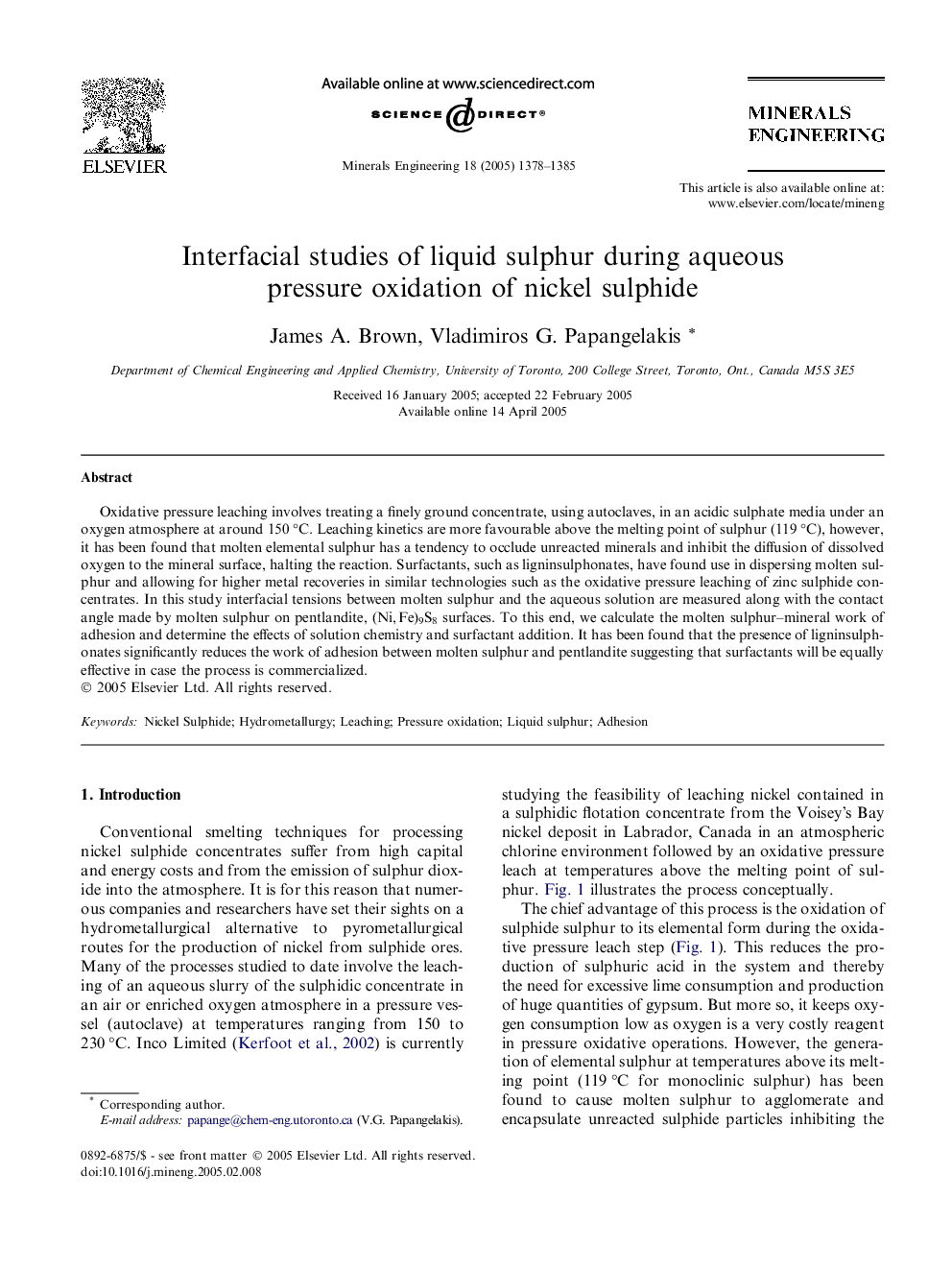| Article ID | Journal | Published Year | Pages | File Type |
|---|---|---|---|---|
| 10280133 | Minerals Engineering | 2005 | 8 Pages |
Abstract
Oxidative pressure leaching involves treating a finely ground concentrate, using autoclaves, in an acidic sulphate media under an oxygen atmosphere at around 150 °C. Leaching kinetics are more favourable above the melting point of sulphur (119 °C), however, it has been found that molten elemental sulphur has a tendency to occlude unreacted minerals and inhibit the diffusion of dissolved oxygen to the mineral surface, halting the reaction. Surfactants, such as ligninsulphonates, have found use in dispersing molten sulphur and allowing for higher metal recoveries in similar technologies such as the oxidative pressure leaching of zinc sulphide concentrates. In this study interfacial tensions between molten sulphur and the aqueous solution are measured along with the contact angle made by molten sulphur on pentlandite, (Ni, Fe)9S8 surfaces. To this end, we calculate the molten sulphur-mineral work of adhesion and determine the effects of solution chemistry and surfactant addition. It has been found that the presence of ligninsulphonates significantly reduces the work of adhesion between molten sulphur and pentlandite suggesting that surfactants will be equally effective in case the process is commercialized.
Related Topics
Physical Sciences and Engineering
Chemical Engineering
Chemical Engineering (General)
Authors
James A. Brown, Vladimiros G. Papangelakis,
